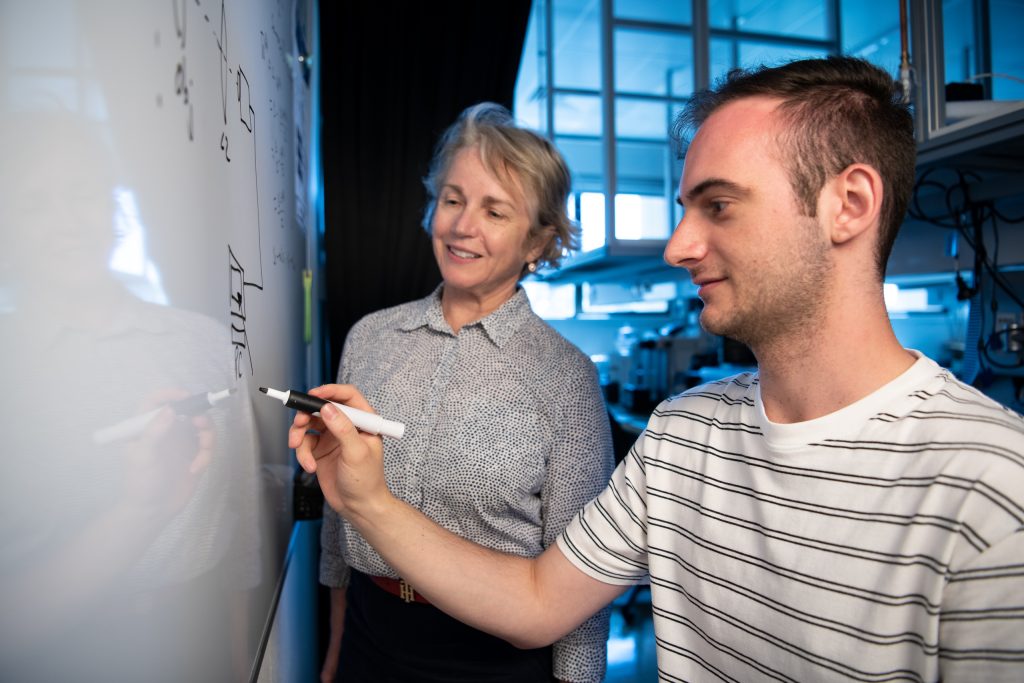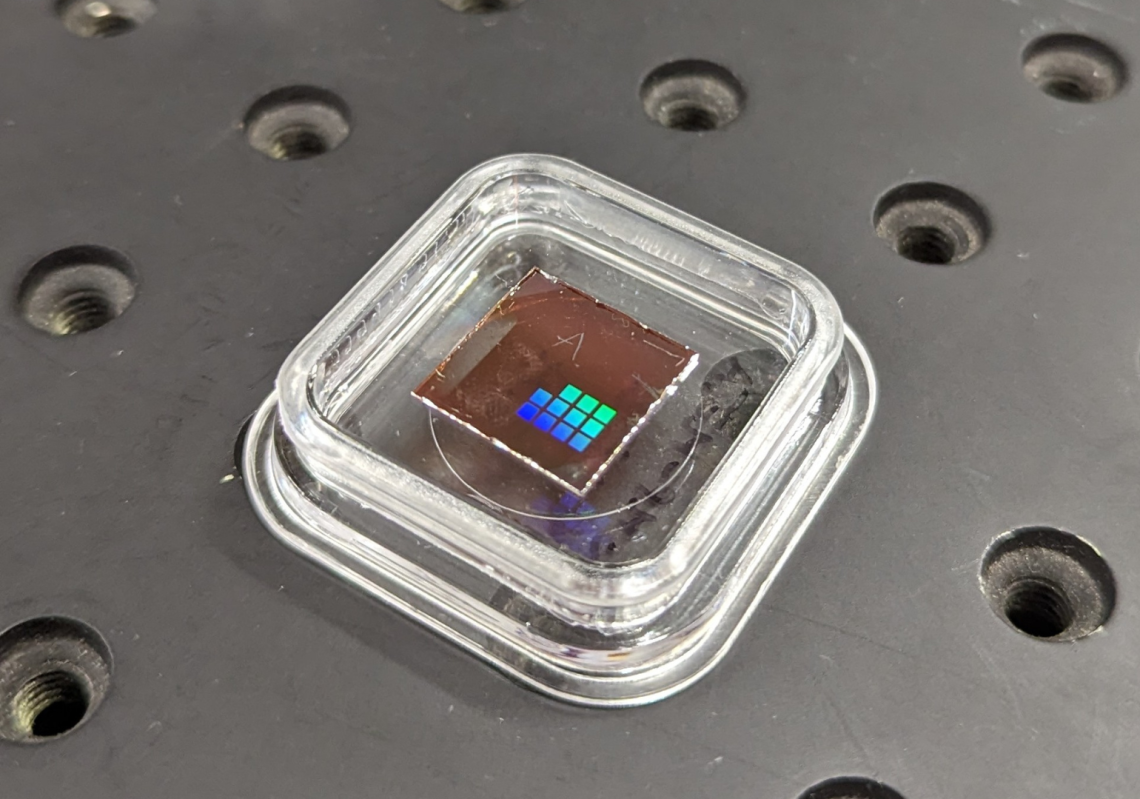These miniature, low-cost sensors with infrared imaging capabilities can be easily fitted to drones and satellites to help farmers remotely monitor the health of their crops.
Using flat optics technologies to switch between optical and infrared images, the sensors will allow farmers to identify crops in need of irrigation, fertilisation and pest control, vastly reducing the costs involved in traditional crop monitoring and potentially saving consumers money on their groceries down the track.

“Currently, a lot of farmers use satellites and drones to collect images so they can keep an eye on their fields,” said RMIT University’s Professor Madhu Bhaskaran, one of the team of Australian and American engineers who worked on the project detailed in the latest edition of Nature Communications.
“Normally, there’s a lot of image processing that goes alongside it that takes a lot of time and costs a lot of money. In this case, we’ve come up with a smart sensor that gives more information but uses less data.”
The thin-film optical sensors have been made possible thanks to a material called vanadium dioxide. Applied as a thin film, it allows the easy switching between edge detection, such as imaging the outline of an object such as a fruit or vegetable, and detailed infrared imaging – all without requiring large volumes of data and the use of bulky external processors.
“Vanadium dioxide is a fascinating material. Most materials have properties that are static, but this is a phase-change material,” Bhaskaran said.
When heated to just 67-7°C, it changes properties.
“[Vanadium dioxide] goes from being an electrically insulating material into a conducting material – or from optically letting infrared radiation through to being infrared opaque. That allows you to use it as a smart sensor. When it is on at one particular temperature, it allows you to collect one piece of information – but once you trigger it and change the temperature, it collects another piece of information.”
One of the great benefits of vanadium dioxide is that the temperature of operation is compatible with standard manufacturing techniques, which means it’s well placed to integrate easily with already commercially available systems.
It can be switched on and off as the user sees fit and, temperature aside, it can also be tuned to work electronically.
“By turning on this dynamic filter by changing the temperature at which the filter is operating, the kind of information it collects automatically changes,” Bhaskaran said. “You get more information about the crops and the agricultural field, which means not as much data needs to be processed – hopefully that saves a lot of money as well in the long run.”

Iterative design
The sensor technology was developed by engineers at the City University of New York, the University of Melbourne, RMIT University and the ARC Centre of Excellence for Transformative Meta-Optical Systems (TMOS).
As TMOS Chief Investigator, Bhaskaran and her team collaborate nationally and internationally to develop the next generation of optical systems that aim to be as smart and miniaturised as electronics.
She and her co-investigators have been working with vanadium dioxide for seven years with a view to unlocking its versatility and different possible applications. Years of research into metasurfaces and smart materials moved their initial focus from its use as an energy-smart window coating to its revolutionary use as an optical sensor.
“One big thing for us at TMOS is making the uptake of technology easier,” she said. “Because this is only a filter you don’t have to go and modify everything. The application is quite straightforward; it’s not a significant overhaul of the entire technology, it’s adding a layer of smarts to an existing technology system.”
RMIT holds a granted US patent (and an Australian patent application is pending) for its method of producing vanadium dioxide films.
Bhaskaran predicted a five- to 10-year timeframe, depending on commercial partnerships, for the sensor technology to become widely available. She said the sensor’s ability to switch readily between processing operations was hugely significant, with the potential to transform a wide range of industries, while the design and materials used to make the filter was amenable to mass manufacturing.
“It will be applicable anywhere [someone is] collecting images and trying to process the information to get more out of it,” Bhaskaran said. “Because these materials are quite smart and [work] at the infrared region of the spectrum, you are looking at applications such as radar or any tech focusing on the infrared.
“Take bushfires as an example. In such a situation you quite possibly can’t see through the smoke, but if you have a camera with these kinds of materials integrated it will allow you to make the invisible visible. People will be able to see things which otherwise you couldn’t with just the human eye.”



